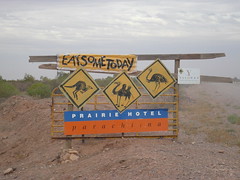
While many of our readers have a good grasp of the importance of Search Engine Optimisation the same can’t be said for knowing how to track digital performance. Let’s take it back to the foundations and look at what YOU can do to stay on top of your online marketing.
This week’s post is going to delve into the specifics of what it takes to market a tour business online. You may have read our last post “Getting online with an online marketing strategy: a case study”, which provided a simple, 3-tiered high level online marketing plan. Well today we will focus on Step 1 of the plan only and give you a real-life example of how search engine optimisation can make or break a business (we had to change names for obvious reasons)!
Before we get started… let’s see how your tour business compares to other Australian competitors…
Benchmarking your tour business against Australian competitors
- Do you offer online availability and price checking?
Only 60% of tour operators do so in Australia. - Do you offer online booking and online payments with instant confirmation?
Currently only 4 out of 10 tour operators do this in Australia - Are you actively using SEO in your business?
If so you beat 50% of your national competitors!
Step 1: Attracting visitors to your website
Situation
It isn’t a secret anymore: if you have a website but aren’t optimising its content for search you missing out on a really cost effective marketing tactic which leaves you relying on costly marketing channels such as AdWords.
Your website is like a newly-opened shop. Unless there is signage and advertising it will remain the best kept secret. Only 50% of tour businesses in Australia invest in optimising their website for search which provides the other 50% a big competitive advantage!
Solution
One of the most cost-effective ways to ensure travellers find you on Google is to research the keywords your target market is likely to use and optimse your website for those keywords. This is the first step to showing on Google and attracting the type of visitors that are most likely to book your product. This is one of the first steps of the discipline is called Search Engine Optimisation (SEO). You can either:
- do this yourself (ATDW’s tourism ekit is a great place to start www.atdw.com.au/tourism_e_kit.asp)
- or engage the services of SEO professionals (starting at approximately $300 per month). Such services include Keyword Research and Link Building.
See it in action
This quick exercise will show you how it all works:
Take a holiday in WA
- Open up Google and pretend you are about to book a holiday in Western Australia. You only have 3 minutes to do your research and – like 9 out of 10 travellers – you turn to Google first.
What keywords did you put in Google? ___________ __________ ____________
Now pretend you are one of your target customers.
- Repeat the same process.
What keywords did you put in Google to find your own business? _____________ ___________
What page did you appear on? ______________ ____________________
John’s bike tours
Let’s pretend that your business is called John’s bike tours and that you are selling bike tours in Airlie beach. You want to find out what keywords you should optimise your website for. Let’s say that your Search engine optimiser recommended the below keywords:
- bike tours airlie beach
- airlie beach bike tours
- airlie beach tours
Do you think they are accurate? How many people are searching on these keyword per month?
If you are not sure how people are finding your website take a look at the keywords in Google Analytics to see exactly what keywords people use. If the top 10 contain lots of brand related keywords it’s a signal you have an SEO problem because you want to attract more new customers not people that already know about your business.
How to get some visibility of what is happening to your business?
To assess if your SEO strategy is working you need to have visibility on at least 3 metrics:
- Your real time rankings on Google for those keywords
- How many visitors are you getting from each and every one of these keywords?
- Last but not least – how many people are actually searching for these on a monthly basis?
The Digital Dashboard picks up where Google Analytics leaves off by providing visibility on all of these metrics. Here is a screenshot.
- The first column shows the keywords
- the next one (green) shows your rankings in Google for this keyword
- the next column (purple) shows the number of visits to the website
- finally, the local searches column (yellow) shows how many people search for these keywords, in Australia, on a monthly basis. This is the opportunity.
So what’s the verdict?
- The keyword to go for is “airlie beach bike tours” as there are over 5,000 people actively searching for it per month.
- How are you ranking for it? Well, you are in position 15, that means on page 2 of Google and you only received 15 out of 5,400 potential visits. Not good
- If you were the owner of John’s bike tours would you be happy with this ranking? Most definitely not.
Finally, I haven’t mentioned the competition column. There is no point optimising for keywords which are too competitive, for example if each of the top 3 spots in Google have hundreds of links pointing to their website and you only have a few then you may need to reconsider which keyword to target. Our keyword research identifies the no-go keywords before you waste time trying to optimise for them…










